Warning: Undefined array key "style" in /home/u595483593/domains/highlinepropertyroofing.co.uk/public_html/wp-content/themes/pearl/partials/header/elements/menu/menu.php on line 79
Warning: Undefined array key "style" in /home/u595483593/domains/highlinepropertyroofing.co.uk/public_html/wp-content/themes/pearl/partials/header/elements/menu/menu.php on line 90
How To Fix A Leaking Flat Roof?

If you have a flat roof and notice water dripping, stains on your ceiling, or damp patches inside your home, your roof might be leaking. It can be confusing and stressful, but if you wait too long, the leak can get worse and cause structural damage.
However, you can fix roof leak with the right tools and some basic knowledge. So, let’s just discuss how to fix a leaking flat roof even if you’re not a roofing expert.
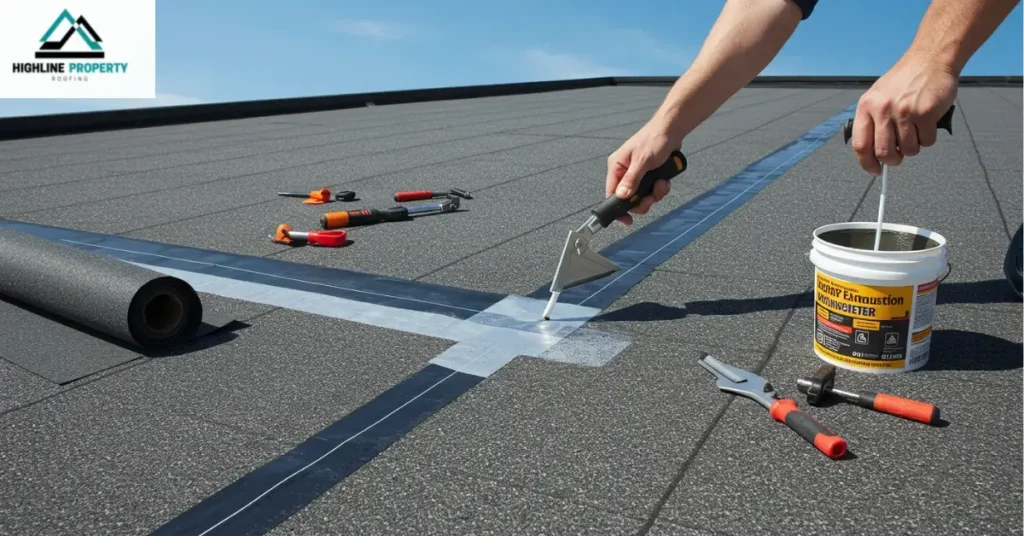
Identify the Source of the Leak
Before repair roof leak, you need to know exactly where the water is coming from. Water can travel quite a distance from the actual leak before it shows up inside your home, so finding the source takes a little patience and work.
Here’s how to do it step by step:
1- Start Indoors
Begin your search inside your house. Look for water stains, damp spots, bubbling paint, or dripping water on the ceiling or walls, especially after rain. These signs will give you a rough idea of where the leak might be. From there, trace the damage upward, as water often runs along beams or pipes before it becomes visible.
2- Inspect the Roof Surface
Next, head up to the roof (only if it’s safe to do so). Look for obvious issues like:
- Cracks or holes in the roofing material
- Blisters or bubbles (trapped moisture under the surface)
- Ponding water (areas where water collects and doesn’t drain)
- Loose or cracked flashing around vents, skylights, and walls
These are all potential sources of leaks, especially after heavy rain or long periods of sun exposure.
3- Check Seams and Edges
Leaks often start where two parts of the roof meet. Check all seams, corners, and edges of the roof carefully. Even a small gap or lifted edge can let water in over time. Use your hands to feel for soft spots or loose sections.
4- Try the Hose Test
If you still can’t find the exact location of the leak, you can try a simple water test with the help of another person. Take a garden hose and gently spray water over one small section of the roof at a time. Meanwhile, have someone stay inside to keep an eye out for any signs of dripping water or new stains on the ceiling. Make sure to wait a few minutes after spraying each area before moving on to the next. This slow, step-by-step method can help you pinpoint even the most hidden leaks.
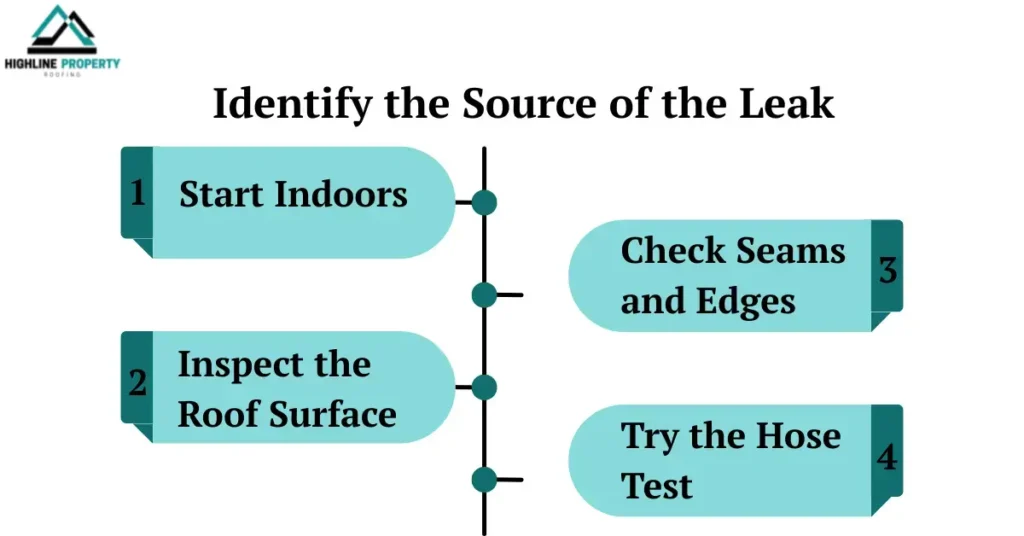
Gather Tools and Materials
Before starting any roof repair, it’s important to gather all the tools and materials you’ll need. This saves time and helps the job go smoothly.
- Roof patch or membrane (EPDM, TPO, Modified Bitumen)
- Roofing tape or sealant
- Caulking gun
- Utility knife
- Gloves and non-slip shoes
- Brush or broom
- Ladder and tarp
How to Fix A Leaking Flat Roof? A Step-by-Step Guide
Once you’ve found the source of the leak and gathered your tools, it’s time to get to work. Here’s a step-by-step guide to help you with flat roof repair.
Step 1: Clean the Area
Before repairing flat roof, you need to clean the area around the leak. Use a brush or broom to sweep away any dirt, gravel, dust, leaves, or debris. If there’s any loose roofing material or standing water, remove that, too. When repairing a flat roof, always make sure the surface is completely clean and dry. Otherwise, the patch or sealant won’t stick properly, and the repair won’t last.
Tip: If it’s recently rained, wait for a dry day or use a towel to dry the area before continuing.
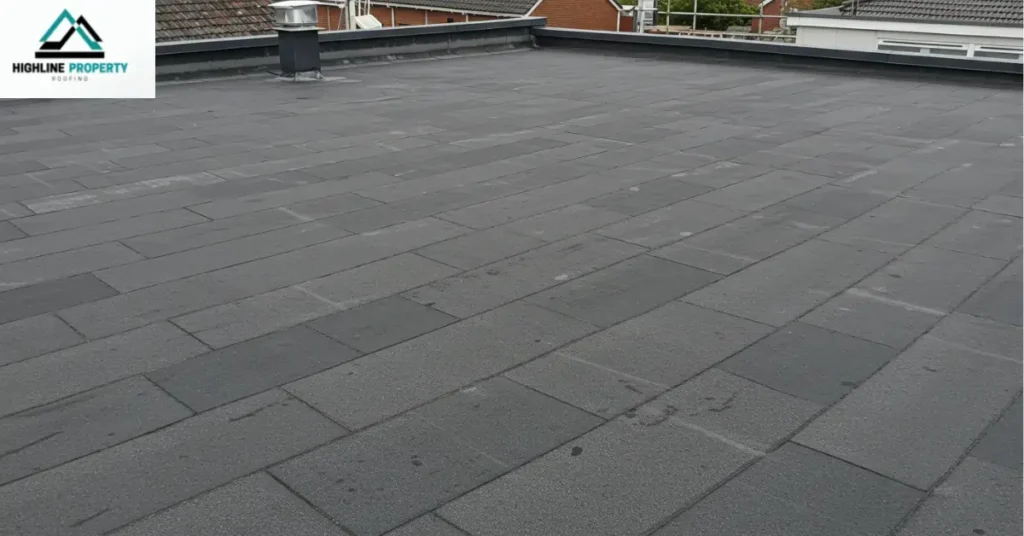
Step 2: Trim Away Damaged Roofing Material
Carefully examine the leak area. If the roofing membrane (like rubber or felt) is cracked, blistered, peeling, or loose, use a utility knife to cut away the damaged part. Cut just enough to reach solid, undamaged material underneath. Be careful not to cut too deep, especially if there’s insulation or wood underneath. Removing the weak spots helps your new patch stick better and guarantees a stronger roof repair.
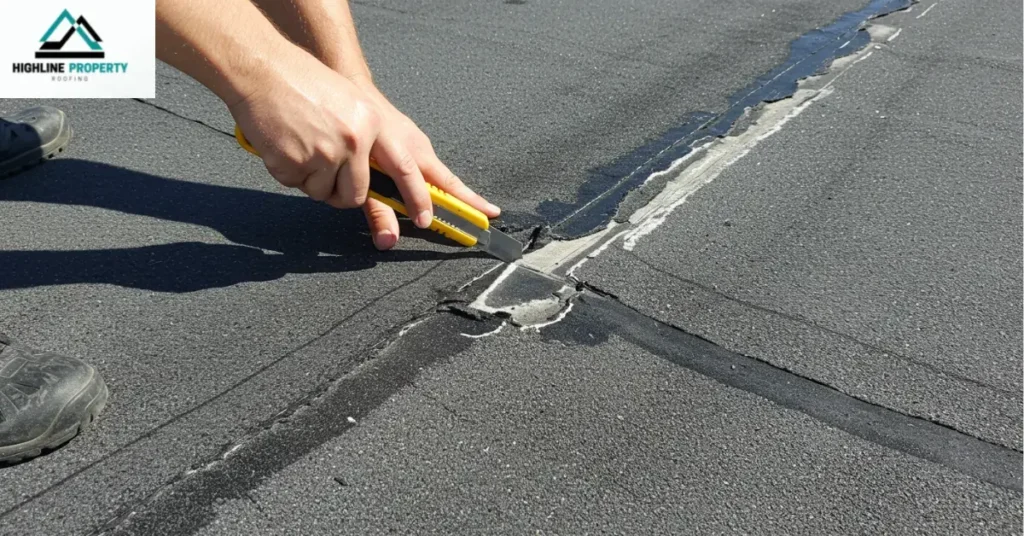
Step 3: Apply Roofing Sealant or Waterproof Tape
Once the area is clean and trimmed, apply a generous layer of roofing sealant over the damaged spot. Use a caulking gun for smooth application, and make sure you spread the sealant at least 2–3 inches beyond the edges of the cut area. This creates a waterproof base for your patch. If you’re using roofing tape instead of sealant, press it down firmly over the area, and smooth out any bubbles or wrinkles. Roofing tape works well for small cracks or splits.

Step 4: Cut and Install the Roof Patch
If you’re using a patching material (such as EPDM rubber, TPO, or Modified Bitumen), cut it to size large enough to cover the damaged spot with at least 2 inches of overlap on all sides. Place the patch directly over the sealant or tape, then press it down firmly, starting in the center and working outward to remove any trapped air. Some patch kits come with adhesive backing, while others need additional sealant under the patch. Always follow the product instructions for best results.
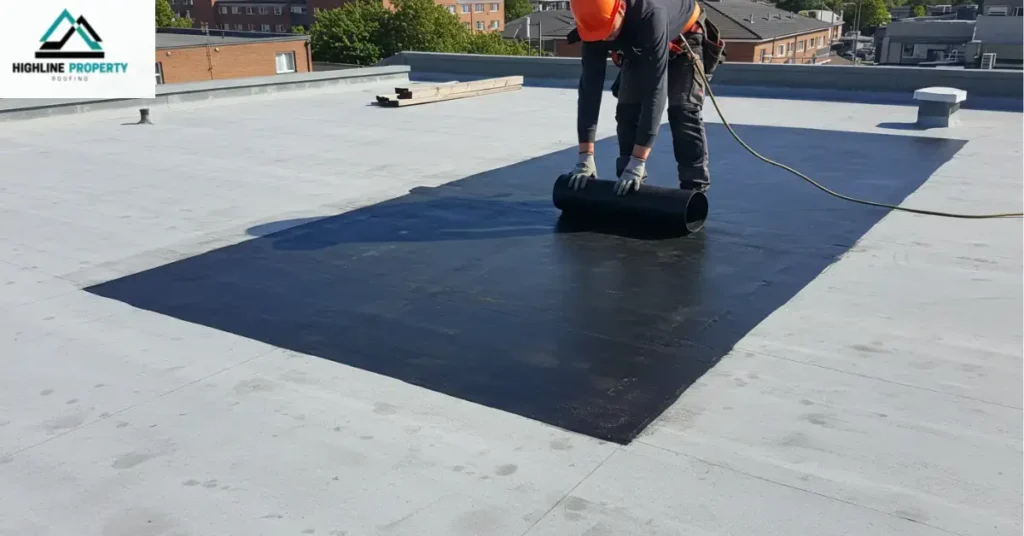
Step 5: Seal the Edges
To finish the job, apply another layer of roofing sealant around the entire edge of the patch. This helps secure the patch in place and creates a waterproof barrier. Use a knife or a gloved hand to smooth it out evenly. Make sure there are no gaps or openings where water could sneak in later.
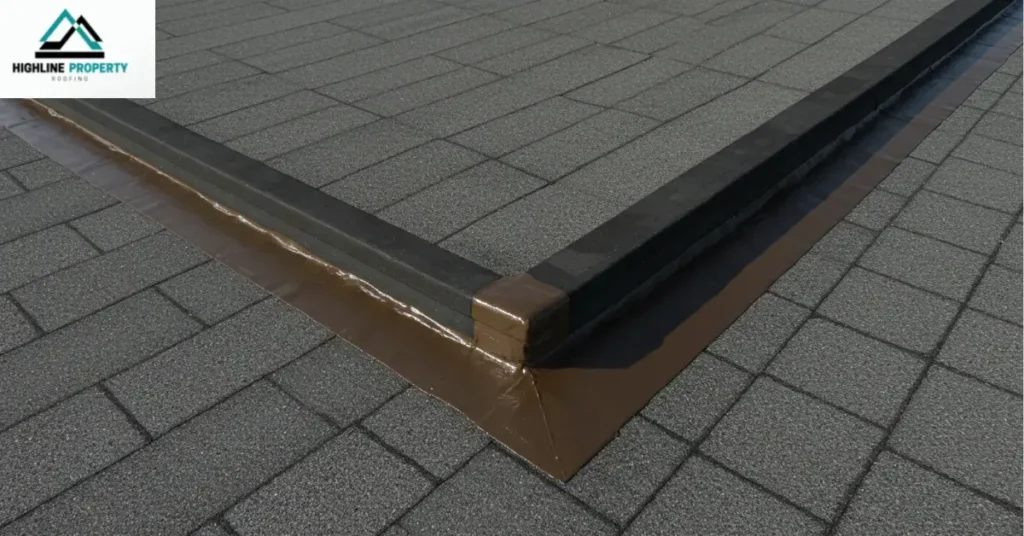
Step 6: Let it dry
Let everything dry completely before walking on the roof or testing for leaks. Drying time can depend on the product and weather conditions; most sealants need a few hours, while some patches may take up to 24 hours. Check the product label for specific drying and curing instructions.
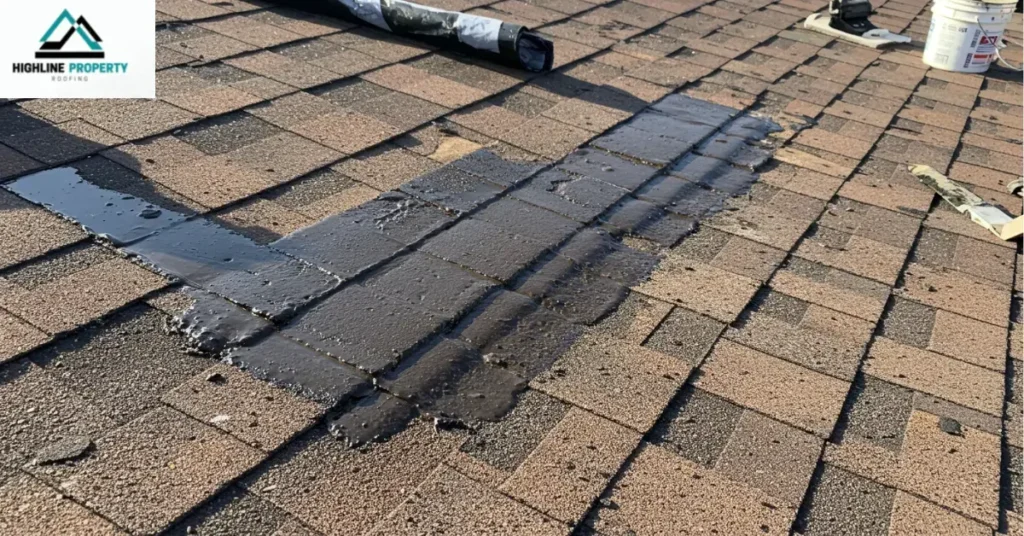
Conclusion
Fixing a leaking flat roof doesn’t always mean a full replacement. Many leaks can be repaired with some basic tools and some time. The point is to act quickly before water damage spreads and becomes more expensive to do roof repair. With regular maintenance, your flat roof can last many years, even in rainy or harsh weather. However, if you’re unsure about how to repair a leaking roof, especially one with major damage, don’t hesitate to call a professional roofer.
FAQs
How much does it cost to fix a flat roof leak?
Flat roof repairs can cost between $300- $700 or more, depending on the damage and the materials used.
Is roof coating a good long-term solution?
Yes, roof coatings can extend the life of a flat roof by sealing small cracks and improving water resistance, but they work best on roofs in overall good condition.
How long does a flat roof patch last?
A quality flat roof patch can last 3 to 6 years, depending on the material used, weather conditions, and how well it was applied.
What is the best sealant for a flat roof?
Rubberised roof sealants or bitumen (roof tar) are commonly used. Make sure the sealant is made for your roof material (like EPDM or felt).
